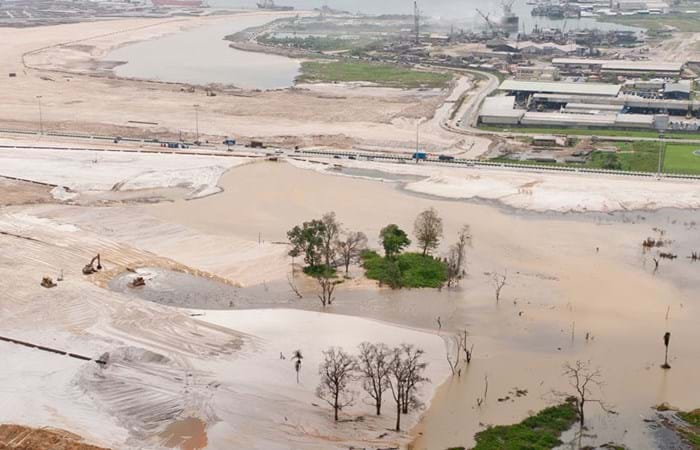In May 2011 Boskalis was awarded the project for the expansion of the Federal Lighter Terminal and Federal Ocean Terminal of the Onne Port Complex by Prodeco International Limited. The project entails the reclamation of approximately 200 ha with suitable materials from nearby borrow areas.
In the Port Harcourt area, the Onne Oil & Gas Free Zone is undergoing a massive expansion under the management of Intels & PRODECO. The facilities in Onne are for the oil & gas industry to serve as a supply base, warehousing, fabrication yards amongst other related activities. Furthermore there is a general container cargo port facility. For all sectors of activities there is a requirement for more space, more quaywall length, with sufficient deep water and more industrial areas are required. The present steps to increase capacity are well on their way, and both civil construction and dredging & reclamation activities are progressing well. Nigerian Westminster Dredging and Marine Ltd is in charge of and responsible for the dredging and reclamation activities. Two areas of each approximately 100 ha are to be reclaimed with sand coming from the Bonny River. For this project, the trailing suction hopper dredge Waterway was mobilized as well as the cutter suction dredger Jokra both owned by the Company. Moreover a whole range of auxiliary equipment was brought to site such as but not limited to bulldozers, hydraulic excavators, wheelloaders, survey vessel, tugboat and barges. The NWDM workshop on site is supporting all activities. The workforce of over 250 persons originates mainly from Nigeria. A lot of focus is always to work with the local communities to supply workforce and to train the workforce as well as to make sure the local communities are benefiting from the spin off from the works. Supplies, additional equipment hires and manpower are mainly arranged through the host communities as well as accommodation for the Nigerian workforce. In a short time frame of less than a year the works advanced well and a large quantity of of sand has been taken from the borrow areas to fill the complete the reclamation of the FLT area and the start the reclamation of the FOT area. The sand has been pumped ashore with utmost care for environment and the difficult subsoil conditions to avoid landslides or other disruptions. The quality control of the works, the settlement of the subsoil of the reclamation areas and the sand supplied was constantly monitored by our in-house geotechnical engineers. To execute the required geotechnical tests NWDM has its own geotechnical laboratory on site.

